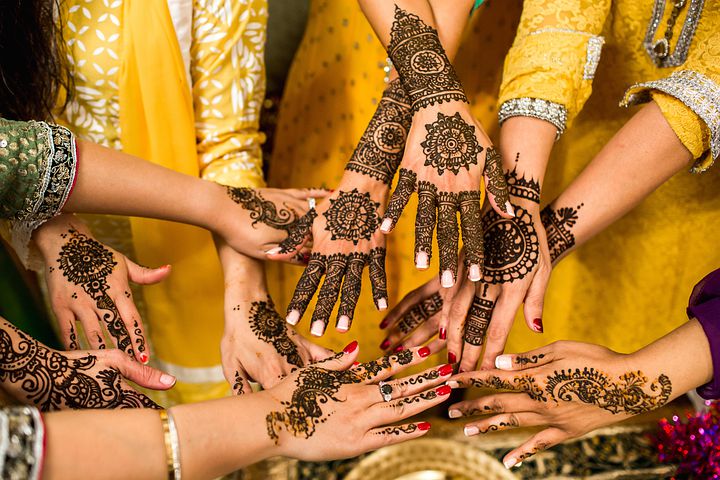
While the term “henna” is Arabic and is tied to many cultures and religions, it’s most predominant in India. Henna is derived from a plant that grows in the Mediterranean area. The leaves of the henna plant are ground to form a fine powder, which is then mixed with water to create a thick, mud-like paste.

Women of all ages wear it during special celebrations and holidays such as weddings, engagement parties, bridal and baby showers, and Islamic festivities. Besides using it to beautify the hands with unique designs and as a hair dye, Henna is also used as a natural body and hair moisturizer.
How to add Henna to your beauty routine
Hair dye
If you’re looking for an all-natural hair dye, henna is for you. While it comes in a variety of colors, you’ll see the most visible results with a form of red — the most common shade of henna dye. Apply the paste to your hair, let it sit for several hours, and then rinse for a whole new you.

Scalp and Hair treatment
If you suffer from dandruff, excess shedding, or a dry scalp, you can try henna as a natural alternative to all the topical medicinal treatments on the market. Also women include henna in their bathing rituals. They scrub their skin and hair with it for a couple of minutes then rinse it off, leaving the skin feeling soft and the hair looking shiny and beautiful.

Mehndi
One of the most common uses for the henna plant is mehndi (also known as henna — we know, confusing). Applied to the skin in paste form, it creates detailed designs that manifest as temporary tattoos. Once you rinse the paste away, beautiful art remains staining the skin underneath. These illustrations can last for two to four weeks.

Nail polish
Henna has long been used as a form of nail polish and is rumored to help strengthen nails and ward off fungus. But remember, henna is a stain. So should you choose to try this lacquer technique, you’ll be stuck with it until it fades.

How to Care for Henna
While there are a few things you can do to help your henna tattoo last longer, they typically last for three to four weeks. After about 10 to 15 days, you can expect the dye to start fading, but before then it should have a strong color and opacity. Below are some care instructions for your henna.
Don’t touch it after application: Once it’s applied, let the henna set for about 30 minutes to ensure it is dry and resistant to smudging.
Avoid water: Cover it up while you’re showering, bathing, or doing dishes.
Avoid chemicals: Steer clear of salt water, harsh chemicals (including hand sanitizer), and chlorine.
Keep it moisturized: Like a self-tanner, henna requires hydration to prolong fading.

